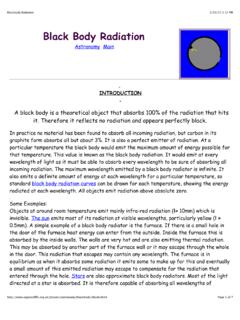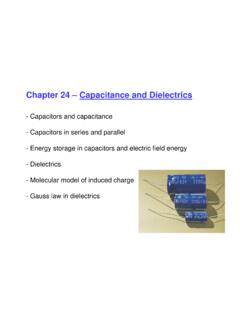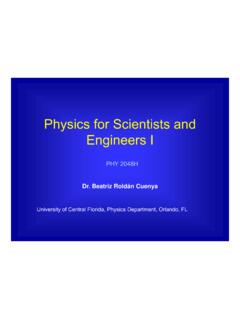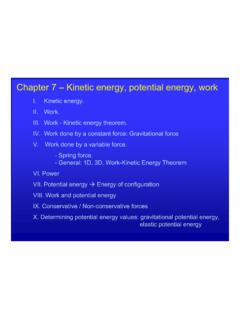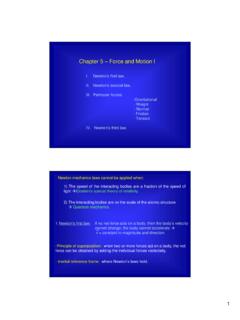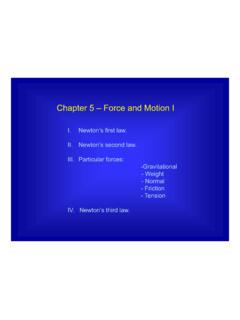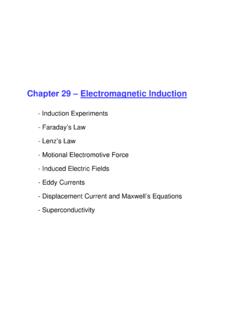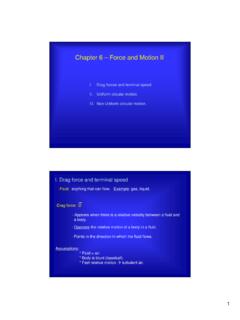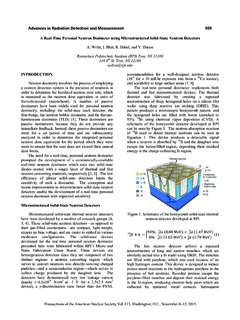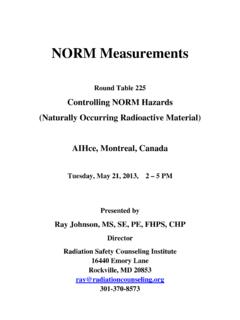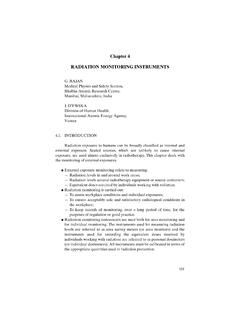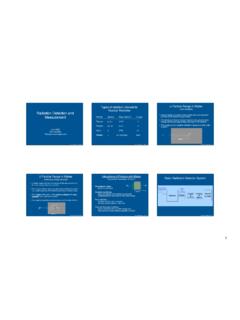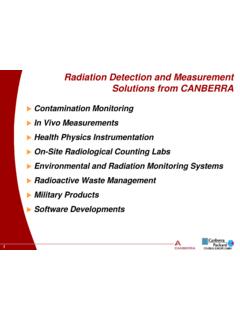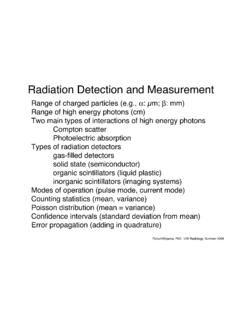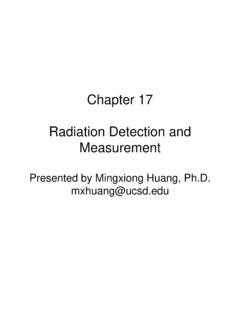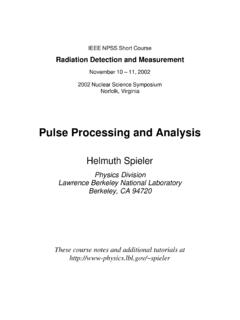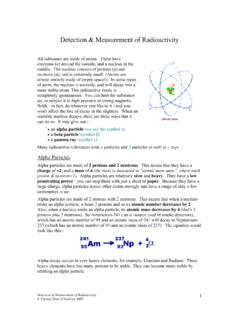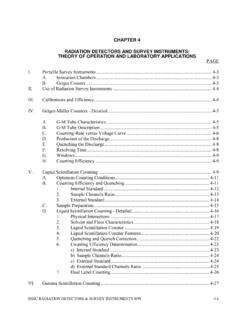Transcription of Measuring blackbody radiaiton using infrared …
1 blackbody radiation NETD Experiment Measuring blackbody radiation using infrared Detectors Theory An infrared bolometer is a device that converts a pattern of irradiation into a visible image, generally with the goal of detecting an otherwise invisible object. Commercially, bolometers are marketed as night- vision and have a wide range of applications from surveillance and security to emergency response. In a typical bolometer, an active element absorbs radiant energy and undergoes some kind of physical change, often a change in resistance, what will ultimately affect the value of an output voltage.
2 The amount of radiant energy of a target (power emitted) can be described by blackbody radiation theory, where the radiated power in a given wavelength interval is a function of the object s temperature. Thus, by direct measurement of output voltage, an objects temperature can be determined. In the case of an array of detectors all absorbing radiation from different parts of an image, a thermal map can be generated. Two things affect how well a bolometer will function: the device responsivity, and the noise.
3 Responsivity is the ratio of output signal to incident radiant power. The noise of the signal can arise from many sources, from background fluctuations of the radiation to thermal fluctuations in the device to electronic noise of the integrated circuits of the device. The best detector has a high signal- to- noise ratio (SNR) for small temperature differentials, resulting in a high resolution. Noise Equivalent Power (NEP) is the power incident on a detector that results in a SNR of 1. This is generally used for a single element in a detector.
4 Noise Equivalent Temperature Difference (NETD) is the temperature difference of a target that results in a measured SNR of 1 for an entire device, generally comprising an array of detectors, the optics, and the read- out electronics of the system. NETD is often cited as the key figure of merit that distinguishes one detector from the next. In this experiment, you will measure the NETD of a detector and then use that information to determine the relationships between the device temperature, emitted power and wavelength of radiation .
5 Objectives 1) For a temperature difference of 8- 10 C, measure the SNR of a target and use this to determine the NETD of the detector. Compare this value to a calculated NETD from device parameters. 2) From the NETD specified from a device, measure and plot the radiance of a blackbody source over all wavelengths as a function of temperature. Compare this to the radiance calculated from the Stefan- Boltzmann Law. 3) Use two different filters for two different wavelength ranges, measure the intensity of radiation as a function of temperature and fit this to the blackbody curve as described by Planck s Law.
6 For example, take a blackbody at 100 C (373K) and measure the radiance (power) and then fit this to the calculated blackbody curve for this temperature. Do this for 4 different temperatures. Objective 1: Set- up to measure NETD See ASTM E1543 (2011) for the full standard from which this is derived The figure above presents the basic design for Measuring NETD. A blackbody held at a constant temperature is placed behind a chopper held at room temperature. A focusing lens is located far enough away so that the blackbody can be assumed a target at infinity (this can be achieved with mirrors or additional lenses).
7 The lens focuses the radiation onto the active area of the detector, the output of which goes to an oscilloscope by way of a low- pass filter. The oscilloscope can be triggered by the chopper rate to isolate the signal from the blackbody . From the oscilloscope, two values are measured: the signal voltage (amplitude of the wave) and the noise of the signal ( width of the lines in the pattern). The NETD is calculated as a ratio of temperature difference to signal- to- noise ratio: !"#!=!!
8 ! !!"#!! In the example above, the signal given is the amplitude of the wave, the noise is the frequency- independent variations in the signal. Each of these could be produced with the same detector for Measuring different blackbody temperatures. Compare the value of NETD to a given value or a calculated value. Objective 2: measurement of radiance vs. temperature With the same experimental set- up as objective 1, change the temperature of the blackbody and determine how this affects the power absorbed by the detector.
9 The radiance can then be calculated as !"#$% !"#$%"&'=! !4 !!!/#! !"#$%&'%%'($ !"#$%&'($) Compare your results to the Stefan- Boltzmann Law. Objective 3: measurement of spectral radiance for a blackbody curve Now add filters to the optical system to allow only specific wavelengths of light. Measure the radiance in these specific wavelengths and fit it to the blackbody curve. Materials: blackbody source Optics (Mirror assembly) Filters Detector Chopper Emitter- Diode Pair Thermocouple Oscilloscope Power Supplies Notes: Do not turn of the voltage on the chopper above 3 V.)
10 We want to keep a low chopping rate. The chopper wheel may fly off of the motor if it spins to fast. Before doing this experiment, first align the system first with the LEDs supplied to ensure that the maximum signal from the blackbody is going to the detector. Then calibrate the blackbody with the thermocouple by either placing the thermocouple just inside the aperture of the BB. You want to know the temperature of heat emitted, so try different ways to get this as accurate as possible.
